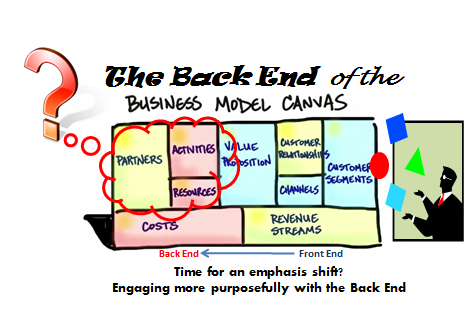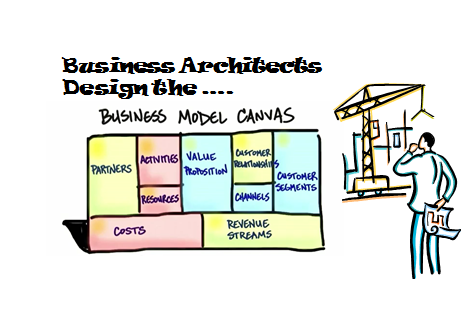
Continue reading “Tackling the internal Jobs-to-be-done for improving Innovation”

Most of our existing organizations are searching for the mechanisms to reinvent their business models, through identifying, designing and executing differently from the existing ones, where they tend to simply be ‘locking themselves into’ repeating patterns, possibly opening themselves up to new forces of disruption.
There is a sense of urgency that is growing at the corporate level, to master this ability to design different business models and then set about executing them, to combat the multiple ‘disruptive forces’ swirling around in the present and near-term business environment.
Reinventing the Business model is such a big ask in the complexities to overcome, the legacies, the vested interests, the distribution of created wealth (dividends, bonuses, performance) are all ‘locked into’ the existing business. Many of those necessary bolder decisions get caught up in horrible compromise. Parallel managing is both an art and a science but it always needs clarity.
Addressing the current dilemma within business models
So we have a classic dilemma, we need to manage and extract as much as we can from the existing business but simultaneously begin to reinvent, to design something different. Continue reading “The Age of Large Business Model Reinvention”
So we all know a standard company balance sheet has three parts: assets, liabilities and ownership equity. The accounting equation states assets and liabilities are known as equity or net worth and this net worth must equal assets minus liabilities. The balance sheet summarises the present position or last audited position.
Well in the Business model canvas we have the cost side, the back-end, made up of the activities, resources and partnership aspects and a revenue side, the front end, made up of customer segments, channels and customer relationships. It is the ‘net worth’ of all these blocks that makes up their contribution to the Value Proposition.
It is the nine building blocks when we put them together, tells the complete story, a little like a business model balance sheet. Balancing this out thoughtfully does need that bringing it all together, so as to give others the compelling story and begin to mobilise around and attract the necessary resources.
My question though is this: “is the BMC understated at the back-end today and should we strike a different balance for more established organizations?”

What happens when one side perhaps gets over emphasised?
Very much the orientation of the business model canvas is presently skewed towards the front end – the market facing part and rightly so. You are in search of a new business model, you will never find it in the building. As Steve Blank rightly stated “you have to get out of the building” to validate your assumptions or hypothesis, to search for the value in the real marketplace.
Continue reading “The Understated Back-End of the Business Model Canvas.”
Business models both in new designs and it management have become centre stage in many of our existing organizations’ thinking. The need is not just too simply find new growth through new business models but to ‘react and adapt’ those existing business model designs that are in place, to catch-all the emerging possibilities that are around, hopefully before others do. Are we doing a good job of this at present?

Those without a legacy or are really agile usually are in pole position to explore new opportunities quickly. Also to start with a blank business canvas is exhilarating. It seems we are in the era of the Entrepreneur or are we? Continue reading “The (Re)birth of the Architect for the Business Model Design”

There seems a lot at present going on around the Business Model and formulating its design. Following on from the Business Design Summit held in Berlin in April of this year there seems to be a gathering of momentum surrounding the Business model.
There is an awful lot of designing going on, actually it is hard to juggle with it all, even for me that has a 100% focus on innovation.
The Business Design Summit had as its primary question: “Are the Business Tools you are using relevant for today’s world?”
It went on to ask “If you want to teach people a new way of thinking, don’t bother trying to teach them, instead, give them a tool, the use of which will lead to new ways of thinking”. “Your business ideas deserve better than PowerPoint and Excel”
The momentum is specifically aimed at Business innovation design tools and how to manipulate them and this is giving rise to the ‘school’ of tool-smiths. I wrote about the Business model canvas as set to explode in 2012 and events this year are certainly ‘exploding’ in multiple ways. Let me give some examples: Continue reading “Juggling Innovation around Business Model Design”
I tend to not like offering up checklists as blog posts, you know those one hundred and one ideas for this or that, although I have to admit I like collecting them as a kick-starting resource. Today I decided to change my mind, Why?
Well, I think those of us involved in innovation need to keep reminding ourselves to not just work on the day’s problem that is in front of us but to ‘move along all the others, so this is my innovation jobs-to-be-done list that clients and consultants need to work upon.
Also, these do build towards a possible Chief Innovation Officer’s agenda and content.
A reminder of what we need to keep tackling and consciously working on.
What do you think? Continue reading “Innovation jobs-to-be-done”
Innovation should always deliver on a specific purpose or promise, often it simply doesn’t. It needs to be suitable to our needs; it needs to resolve a given job-to-be done.
In the developed world we are consistently over-delivering innovation for many and there is a given cost to that, which we all pay for even though we often don’t really need it in the first place.
Take, for example, the software provided by Microsoft for its windows application, in its office versions, they all are over-specified for our personal needs.
The majority of these ‘sit’ on our computers taking up space and never used. This continued requirement which we are forced to constantly upgrade requires us to seek more computing power yet it is really inappropriate for most people’s needs.
Continue reading “Appropriate Innovation Makes Good Sense.”
Jobs-to-be-done seems to be a real convergence point for many innovation thinkers. This needs to be more central in our innovation thinking it seems to me.
Discovering intersections is where ideas collide, according to a theory brilliantly put together in a book some years ago by Frans Johansson called “The Medici Effect”. Johansson recommends we step into these intersections and then you can see how different thinking can meet head to head, as in this case from numerous innovation experts, to give you a deeper insight into your own innovative thinking.
I often have a habit of opening up a file on a subject when I feel it needs further exploring and jobs-to-be-done has become one of these. It is the convergence of many experts repeating sometimes their personal mantras has finally given me a growing realisation on how important this understanding of satisfying these jobs-to-be-done becomes too successful innovation.
Now this ‘light bulb’ moment of mine may not come as such a great surprise to some of you selected few but I’d argue it might be worth reflecting upon by taking a fresh look at this ‘idea’ of jobs-to-be-done a little deeper in your thinking also. There are many who tell you we should.
The power of many innovation thinkers Continue reading “Grounding innovation through convergence and intersections”